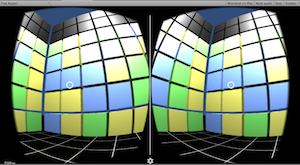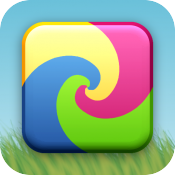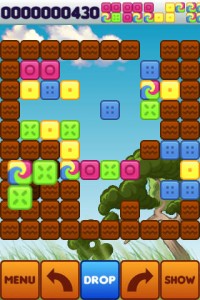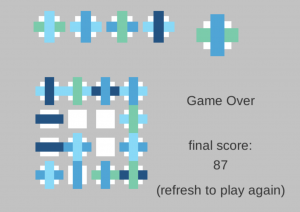Here are this week’s game idea journal entries:
2/19 – Another IF (Interactive Fiction) game idea, this one inspired by Jamie Brew’s excellent predictive text shenanigans on twitter. Essentially, I think it would be fun to do some generative IF, and see how it plays.
2/20 – Spent a bit of time thinking about a visually upgraded Minecraft, and that led me to imagine an ice castle building game. Minecraft for winter wonderlands. More light options and blocks that glow and melt and reflect. Find frozen wooly mammoths and fossilized neanderthals. A different block type for each of the eskimo’s 100 words for snow.
2/21 – An amazon/eBay selling/shipping/rating simulator. Essentially this is like an idle game, maybe? But it you basically start out with an apartment full of stuff, and can sell it on amazon or eBay. You can also buy stuff on Amazon or eBay or craigslist (where it will be the cheapest). As you progress farther into the game, you have opportunities to buy more expensive things and sell them for more profit until you are essentially a millionaire buying private jets on Craigslist and selling them on eBay.
2/22 – Tuesday this week I had a couple of entries, (and was oddly productive to boot, so I was on a roll, productivity-wise). One of them was a rant about elements of action puzzle games, and about how puzzle is the operative word. I ranted about the failure of some games in the genre to provide a decent puzzle, and the blurry line between action puzzle and straight-up action. Someday, maybe I’ll turn the rant into a full-blown blog post.
The other entry was about a couple of random match-3 musings. Mechanics, I guess, but more re-framing the “board” of match-3 puzzles. This was specifically about “swapping” puzzles, like bejeweled, but the ideas could probably apply to any grid-based puzzle game. Essentially thinking about two different ways to make the game boards themselves infinite. (Ways I haven’t seen before.) One of them involves moving to 3D, the other is more about recursion.
It’s worth noting that I spent pretty much all week working on the Unity prototype I mentioned last week. I’ve got a crashing bug that I need to track down, but otherwise the game is at a place where I’m super happy showing it off. (It doesn’t crash in the Unity IDE, just when I publish it to my iPhone.) Anyway, this idea, as well as the rest of the entries from this week reflect how “in the headspace” of puzzle games in VR I’ve been.
I posted an informal poll on the MSP GameDev Slack, and the name that was the clear winner was “Puzzle Prison”. Also in the running were Drop Cage, and VR Drop. Another one that I’m not seriously considering is Collapse-in-a-box.
2/23 – This variant on Puzzle Prison was essentially to make each of the blocks two-sided. Tapping would rotate to the other color, and no longer break blocks, so a group would only disappear once you have three in a row, or something along those lines.
2/24 – A brainstorm around what a VR puzzle game in the vive would look like. (Where you can move around in the space.) I had a couple of different ideas, both of which involve dividing up the volume of space into cubes, and putting “guide lines” into the space. The first idea was to turn your hand into a hammer, and allow you to push around blocks in the space until you have a decent sized group, and then “break” them by hitting them swiftly with the hammer. The second idea was to fill the space up arm (controller) height by default, and then allow you to swap them, making matches of the same color to “dig down” into the cubes. Maybe you have to dig your way to the floor, or maybe the cubes keep rising, and if they get to head height you lose.
In both ideas, an open question is whether you would be able to see through the cubes, or whether they would occlude the cubes behind them.
2/25 – Another brainstorm about Puzzle Prison, both about level progression, as well as three new possible cube types (not powerups, but new game types, like the entry from 1/23). The idea was that as you “beat” a level, you are introduced to additional cube types, and eventually you play them in the same game. I’m not sure if I will add this to the game, or if it even needs it. I’ve got to have it more playable and get some more feedback, first, I think.

 This week I have spent fairly productively prototyping a simple Action Puzzle game playable in VR with Google Cardboard. This idea actually came from my Idea A Day project entry on 1/20. Here is an early screenshot I posted in the MSP GameDev Slack.
This week I have spent fairly productively prototyping a simple Action Puzzle game playable in VR with Google Cardboard. This idea actually came from my Idea A Day project entry on 1/20. Here is an early screenshot I posted in the MSP GameDev Slack. Interested, as I am, in the family tree of puzzle games, when I wrote up my
Interested, as I am, in the family tree of puzzle games, when I wrote up my  The gameplay is at your own pace, and you do see a queue of the next few pieces, so you can plan ahead to maximize your strategic brain burning. When picking up the game again after all this time, I found it didn’t quite hold my attention the same way 1010! and Hex FRVR have for so many hours. I’m not honestly sure why that is the case. The complexity is about the same, maybe a tiny bit higher, due to the color matching rather than line-making, but I found myself playing the game a lot slower than I do those others.
The gameplay is at your own pace, and you do see a queue of the next few pieces, so you can plan ahead to maximize your strategic brain burning. When picking up the game again after all this time, I found it didn’t quite hold my attention the same way 1010! and Hex FRVR have for so many hours. I’m not honestly sure why that is the case. The complexity is about the same, maybe a tiny bit higher, due to the color matching rather than line-making, but I found myself playing the game a lot slower than I do those others. 2/6 – I finally got my prototype of the game I started on 2/3 working. The project’s preliminary name is LineCombine. I was happy with how quickly this came together, but I’m still not as competent in Unity as I am in Xcode. You can see a screenshot of the game at this point. Anyway, as happy as I was to have it playable, I realized quickly that it was way too easy. And not really all that fun as a result. My brainstorm for the day was about ways to improve this. Now it’s the age-old question of how much more effort should I put into a prototype that is not yet(?) all that fun.
2/6 – I finally got my prototype of the game I started on 2/3 working. The project’s preliminary name is LineCombine. I was happy with how quickly this came together, but I’m still not as competent in Unity as I am in Xcode. You can see a screenshot of the game at this point. Anyway, as happy as I was to have it playable, I realized quickly that it was way too easy. And not really all that fun as a result. My brainstorm for the day was about ways to improve this. Now it’s the age-old question of how much more effort should I put into a prototype that is not yet(?) all that fun.